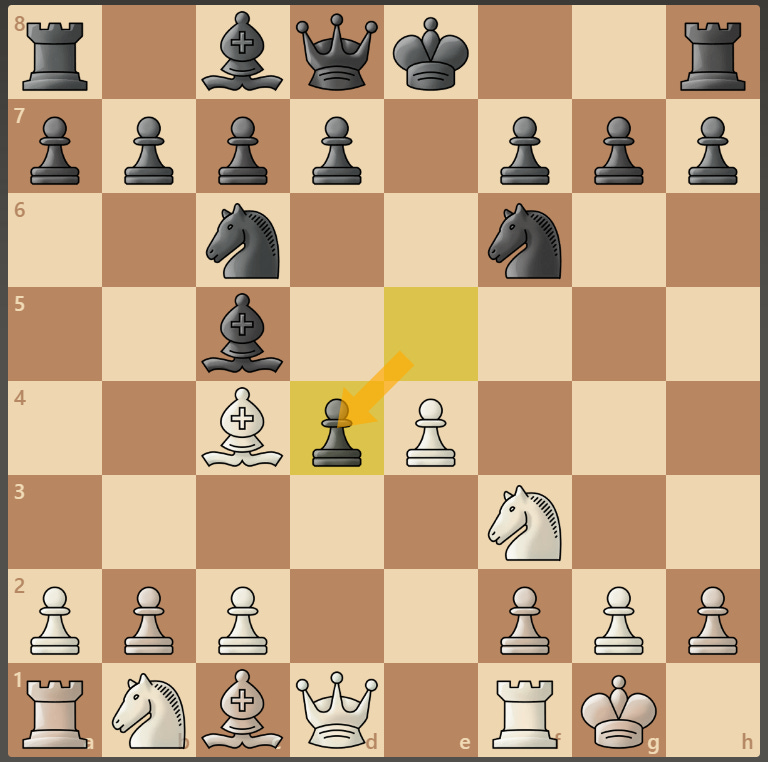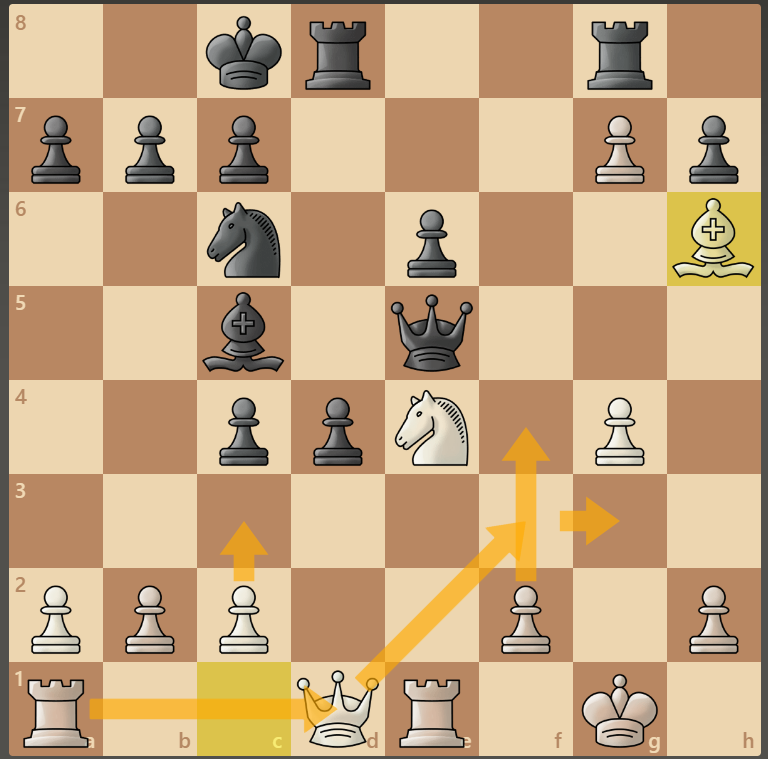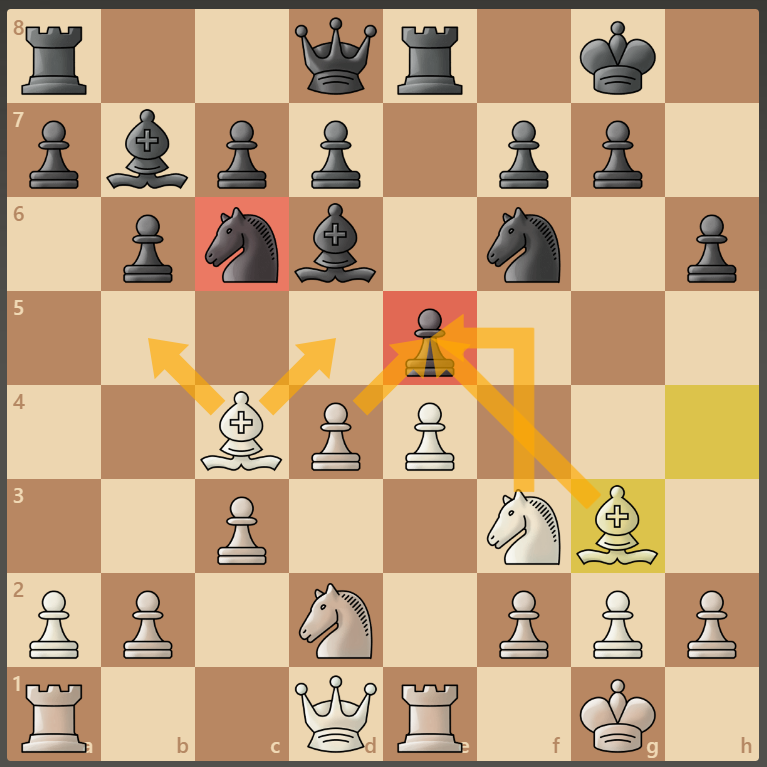Hey guys, it’s your beloved Allen here! Today we are gonna look at “Max-Lange attack (part-3)”, where black plays 5..exd4. I would like to thank my subscribers for trusting in me and helping me grow this email newsletter. If you are new to this chess magazine, I would recommend you to check out part-1 and 2 before coming here.
Consider subscribing and share this article if you find it worthwhile! Hope you enjoy this article. Let’s get into the action!!
5..exd4
A quick recap, 1. e4 e5, 2. Nf3 Nc6, 3. Bc4 Bc5, 4. 0-0 Nf6, 5. d4 exd4. The move 3..Nf6 will be covered in the Fried-Liver attack series. In this article we are gonna focus on the move 5..exd4.
Here, white should continue with 6. e5. Black has only two options, counter-attacking the bishop on c4 with the aggressive d5 (or) moving the knight on f6. 6..d5 is considered to be the best response for black, so we will cover that later. Now, let’s focus on what happens when the knight moves.
6..Ne4 and Nh5
If black plays the move 6..Ne4, white can trap the knight with Qe1, Qe2 or Re1. If black tries to support the knight with 7..d5, 8. exd6 (en-passant) wins. If black tries the move 6..Nh5, 7. Ng5 and black loses the knight on h5 or the pawn on f7 resulting in a fork.


6..Ng8
If black plays 6..Ng8, then white can play 7. Ng5 threatening the f7 pawn. Black has to play 7..Nh6 (as 7..Nxe5 runs into 8. Re1 and black loses). Here white can play the calm move 8. Re1, passing the move to black. Black is a lot of trouble here.
8..0-0
8..0-0 is met with 9. Qd3 g6, 10. Qh6 Kg7, 11. Qxh6+!! Kxh6, 12. Nxf7+ Kg7, (12..Kh5 runs into a mate-in-4, I want you guys to solve it on your own) 13. Bh6+ Kg8, 14. Nxd8+ followed by Bxf8 and white is up a whole rook!
8..Be7 or Bb4
8..Bb4 is met with 9. c3. 8..Be7 is met with 9. Qh5 and if black castles, 10. Nxh7 is a killer. 10..Kxh7 has to be played, 11. Bd3+ Kh8, 12. Bxh6 g6, 13. Qh3 d5, 14. e6 to meet Bxe6 with Rxe6 followed by Bxf8+is devastating.
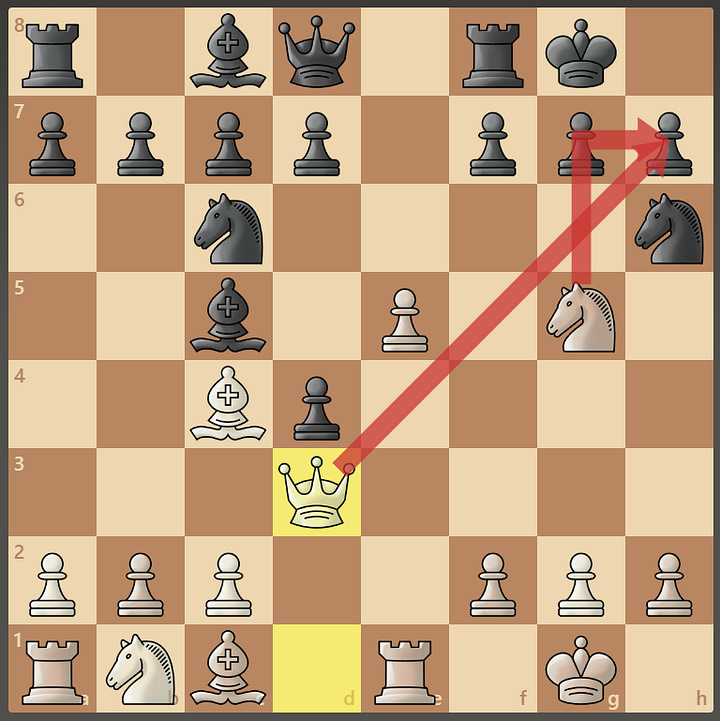

6..Ng4
Black is only left with 6..Ng4. White can play the natural move 7. Bf4. Black has three decent options— d5, d6, 0-0.
7..d5 or d6
7..d5 (or) d6 is met with 8. exd6 Bxd6, 9. Re1+ Be7 (9..Ne7, 10. Bxd6 Qxd6, 11. Qxd4 and white is slightly better), 10. c3 dxc3, 11. Nxc3 0-0 12. Qe2 Bf5, 13. Rad1 Qc8, 14. Bxc7 followed by Nd5 and white is marginally better because of white’s better bishop (targets f7) and active rooks.
7..0-0
7..0-0 looks dumb as it runs into 8. h3 Nh6, 9. Bxh6 doubling the pawns. The computer says it’s +0.1, but in a practical game white has good attacking chances. White can continue with c3, bringing out the knight to c3-e4-f6 and Qc1 targeting h6. There is a lot of scope left here. I will suggest you to analyze every single variation yourself to get a better understanding.
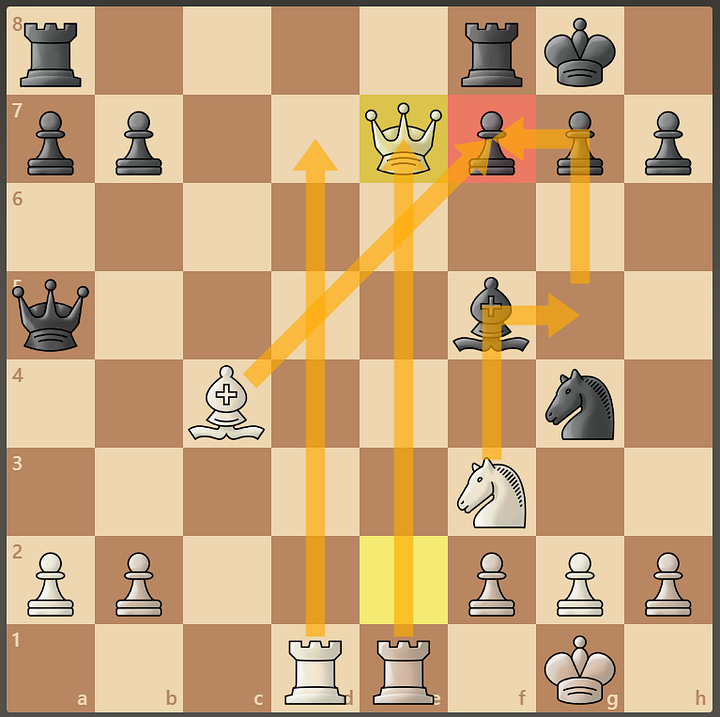
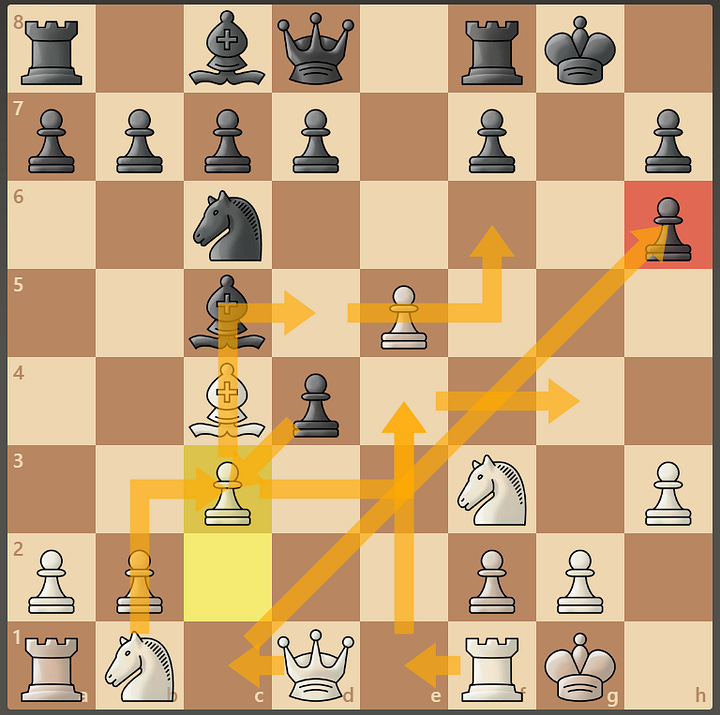
6..d5
This is black’s best response and white should continue with 7. exf6 dxc4, 8. Re1+ and black has two options— Be6 and Kf8. For the move 8..Kf8, I’ll give you the basic plans and attach a sample game (It is one of my online blitz games). 8..Be6 will be focused here.
8..Kf8
When black the move Kf8, white should be screaming in joy inside. White is going have a lot of fun here. White should start with the move 9. Bg5, threatening to play fxg7+ and winning the queen. So black has three options here— gxf6, g6 and any queen move.
If black plays 9..Qd7, 10. Bh6 is a killer with the idea of Qc1 in the next move, black is dead here. 9..Qd5 is met with 10. Nc3 followed by Nce4 with the idea of fxg7 and Bf6 is too powerful. 9..Qd6 is met with 10. Nbd2. You can look at my game, I’ve not played it in the most accurate way :), but still it should give you an idea (My online blitz game)
If black plays 9..g6, white can continue with 10. Bh6+ Kg8, 11. c3 d3, 12. Nbd2 Bf8, 13. Bxf8 Kxf8, 14. Nxc4 Qxf6, 15. Qxd3 and white is slightly better because of black’s weak king and white’s active pieces. For 9..gxf6, white should respond with 10. Bh6+ Kg8, 11. Qc1 Bf5, 12. c3 d3, 13. Qf4 Bg6, 14. Nbd2 Bf8 (14..b5 runs into 15. Ne4 Be7, 16. Nxf6+! Bxf6, 17. Re8+!! Qxe8, 18. Qxf6 Qf8, 19. Bxf8 followed by Qxc6), 15. Bxf8 and Nxc4. Yes white is a pawn down, but the black has a weak king, a doubled f-pawn and undeveloped rooks and queen. This is good compensation for white.
8..Be6
White can play the tricky move 9. Ng5. Here black has one good move, 9..Qd5. All the other moves like Qd7, Qxf6, gxf6 lose. g6 is a very engine-like move, let’s look at each of it one-by-one.
9..Qxf6, gxf6 and Qd7
The moves Qxf6, gxf6 and Qd7 lose to 10. Nxe6 fxe6, 11. Qh5+ and black loses his bishop on c5. 9..Qd6 is met with 10. fxg7 Rg8, 11. Rxe6+! fxe6, 12. Qh5+ Kd7, 13. Ne4 and wins the bishop in the next move. 9..g6 is a reasonable move, but I don’t find it very human. Incase your opponent plays this move, you can react with 10. Nxe6 fxe6, 11. Rxe6+ Kf7, 12. Re4 Re8, 13. Rxe8 Qxe8, 14. Nd2 with the idea of Nf3-g5, Qe2 and Bg5, the position is equal as black has the 3 vs 5 on the queen side, but both sides have equal opportunities here.
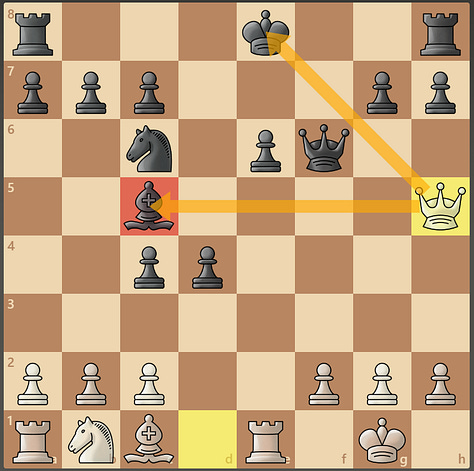
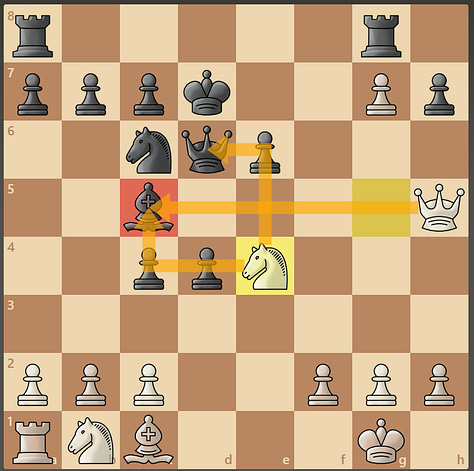
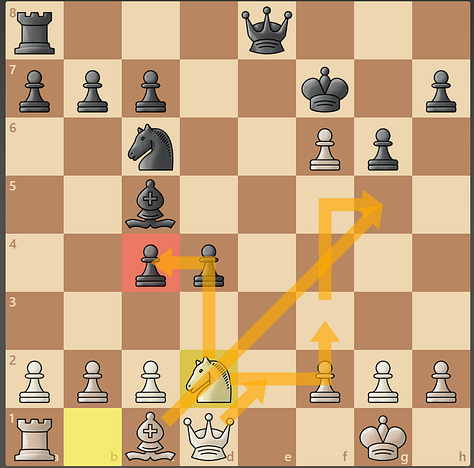
9..Qd5
This is black’s beast response. White should respond with 10. Nc3 Qf5, 11. Nce4 0-0-0 (if 11..gxf6, 12. g4 Qg6, 13. Nxe6 fxe6, 14. Nxc5), 12. g4 Qe5, 13. fxg7 Rg8, 14. Nxe6 fxe6, 15. Bh6… white is doing ok.
It’s a highly complex position, but when black plays this very accurately, we end up in an equal position. Lot more left, the game is far from over. I would suggest you to analyze this particular variation with an engine, because there is so much to know. Lot of tactics loom in these positions. I can’t show everything as it makes it very complicated. Analyze, practice and repeat! The more experienced you are, better will be your results!
What if black declines the gambit on move 5?
The only sensible move is 5..Bd6. All other moves simply lose the pawn on e5 for no reason and white is better. So the best way to play is,
Never let your opponent move his d6 bishop - Why? Because it restricts his d-pawn’s movement thereby hindering his queenside development. Whenever he wants to, it should come at an expense of something (Like he loses his e5 pawn).
Never let him exchange his e-pawn - Exchanging his e-pawn with your d-pawn should be bad for him. Expand and reinforce your center so well that he is suffocates.
If you follow the above two, you are close to victory. How do you do this? I’ll show you how it’s done.
Re1 0-0 (Black can’t capture on d4 bcos of e5), 7. Bg5 h6, 8. Bh4 Re8, 9. c3 b6, 10. Nbd2 Bb7, 11. Bg3… black is suffocating at this point.
Black is almost out of good moves. 11..Nh5 runs into 12. Nxe5!. White’s plan is simple, Bb5 or Bd5 and remove the c6 knight and win the e5-pawn. The best part is that there is no good way to stop this from happening. Black can create some counter-play, but should win this game comfortably if he is accurate for the next 10 moves.
That’s it for today guys. Hope you enjoyed today’s article. If you did, like this post and consider subscribing and sharing this chess magazine to your friends and colleagues. Leave your thoughts down in the comments section. I will see you in my next blog. Signing off— Allen!


